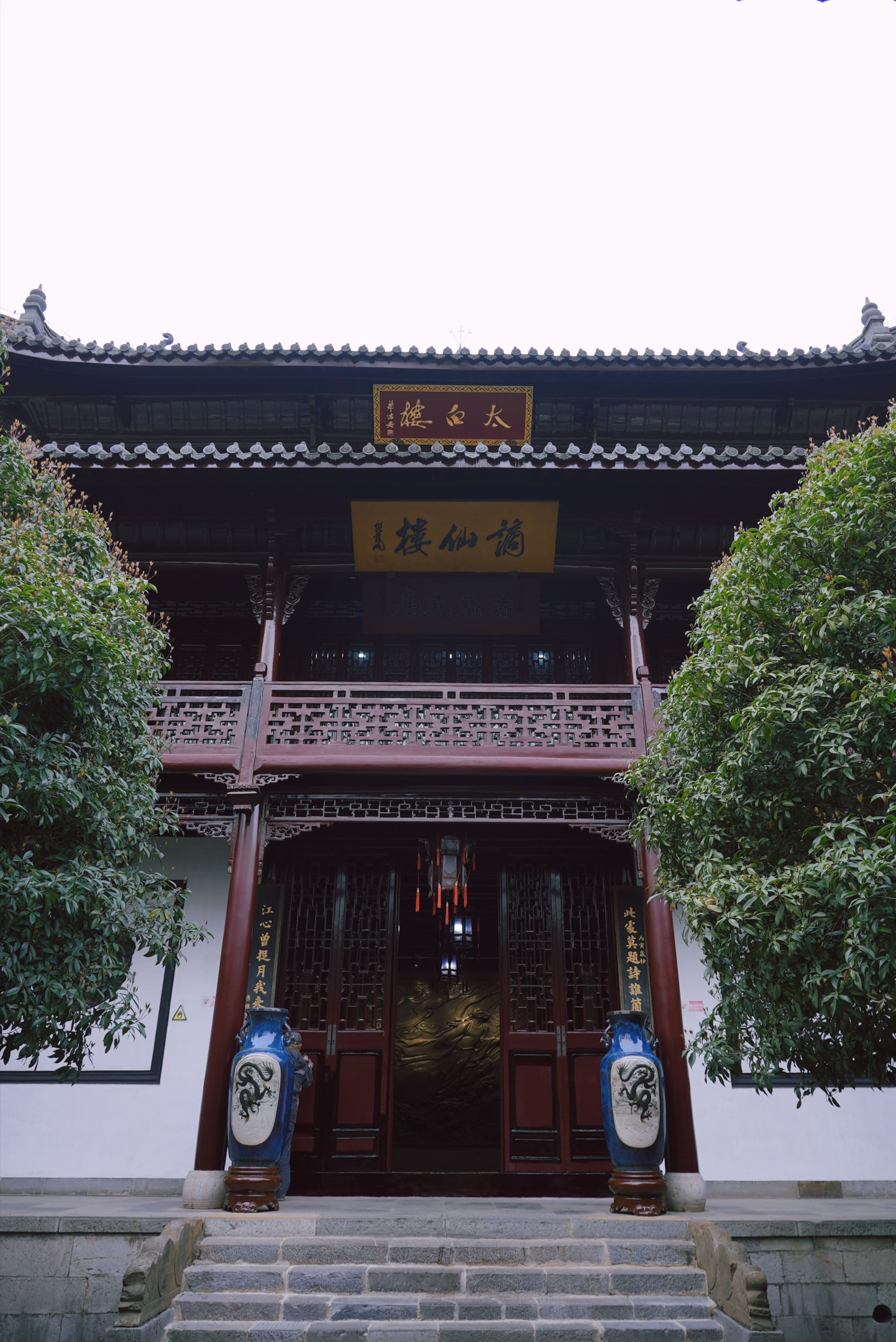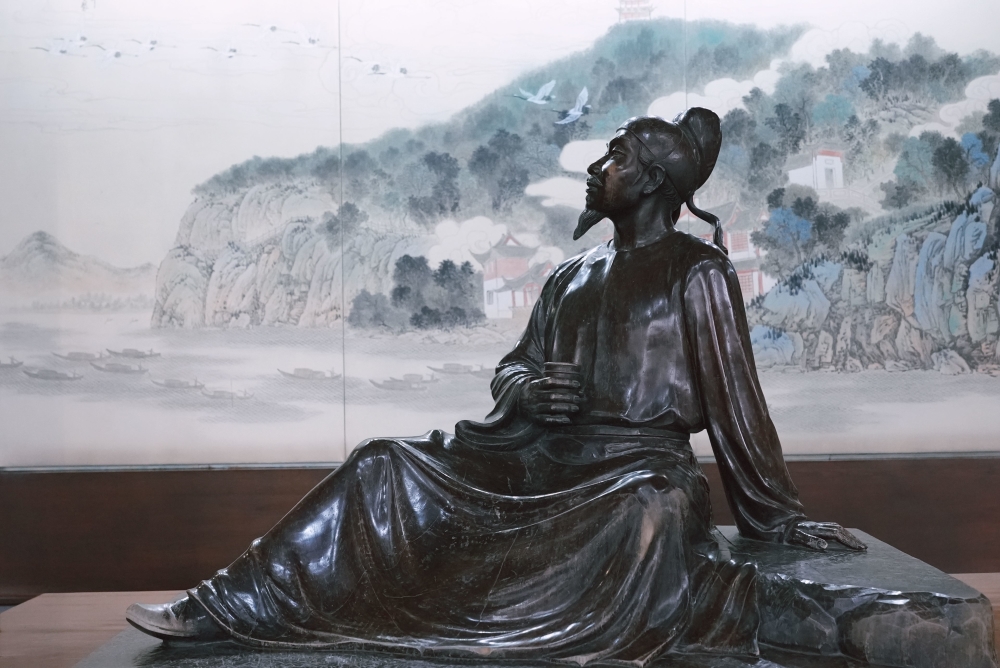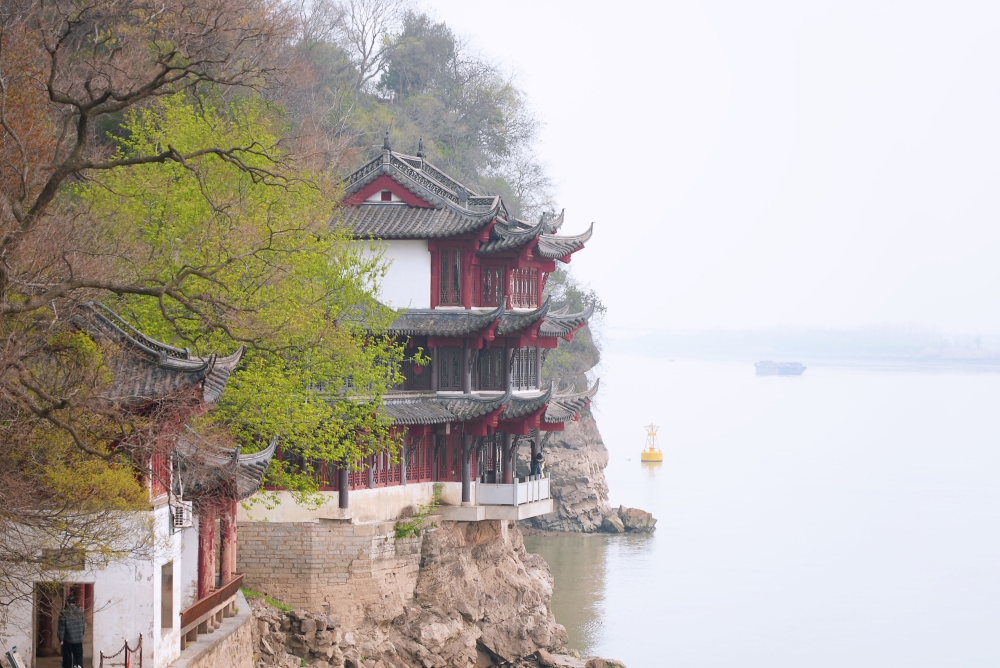|
This place has the largest Li Bai Memorial Hall all over China, the Art Museum of Lin Sanzhi, who is known as the "Contemporary Master of Cursive Calligraphy," as well as many popular attractions such as the well-renowned Sanyuan Cave, Zhexian Garden Ancient Architecture Complex, Ancient Plank Road, and Cuiluo Bay. Here, you can find numerous cultural relics and historic sites, and picturesque natural landscapes. This is the national AAAAA-level scenic area of Caishiji. 
Aerial Photo of Caishiji (by Wang Xiaofei) As it is situated on the east bank of the Yangtze River, Caishiji stands tall amidst the rapid river flow, featuring steep cliffs in strange shapes that overlook the river. Along with Nanjing's Yanziji and Yueyang's Chenglingji, Caishiji is known as one of the "Three Rocky Outcrops along the Yangtze River" and is ranked at the top due to its stunning natural scenery and rich cultural heritage. The great Tang dynasty poet Li Bai climbed and composed his poems here multiple times during his lifetime, leaving behind a legendary story of "jumping into the river to catch the moon, riding a whale to ascend to the sky." For centuries, numerous men of letters have come here to seek the traces of the "Immortal Poet" and experience the emotions of the past. 
Taibai Tower, a symbol of the local culture of Li Bai, was initially built during the Yuanhe period of the Tang Dynasty (806-820 AD) and was originally named "Zhexian Tower" (Zhexian is another nickname for Li Bai). It has a history of nearly 1,200 years. It was rebuilt and renamed "Taibai Tower" in 1730, and was also called the "Tang Li Gong Qinglian Temple" ("Qinglian" indicates Li Bai's art name "Qinglian Jushi", which literally means the "Householder of Azure Lotus"). The building was destroyed again during the Tongzhi period of the Qing Dynasty, and the current Taibai Tower was built by Peng Yulin, the governor of the Hunan Navy, in 1877. After multiple renovations in the contemporary era, Taibai Tower has now regained its splendor. 
Taibai Tower is 18 meters high and has a three-story, two-courtyard structure with a front building, a rear pavilion, and left and right corridors. Especially noteworthy is the statue of Li Bai lying inside the Li Bai Shrine, which vividly captures the charm of the Immortal Poet. Taibai Tower, along with Yueyang Tower in Hunan Province, Yellow Crane Tower in Hubei Province, and the Pavilion of Prince Teng in Jiangxi Province, is known as the "Three Towers and One Pavilion" of the Yangtze River. 
The Sanyuan Cave is another prominent scenic spot in Caishiji. Legend has it that three scholars (those who passed the imperial examination at the county level in ancient China) from Hunan went to Beijing to take the palace examination. They traveled downstream on a boat along the Yangtze River, but were suddenly caught in a violent storm at Caishiji. Fortunately, they managed to seek refuge in a mountain cave, which was said to be guided by a Buddhist statue facing the river. The three scholars, who miraculously survived the ordeal, achieved the top three honors in that palace examination. To show their gratitude for the divine protection, they built a temple in the cave to worship the Buddhist statue, and thus named it "Sanyuan Cave", namely "Cave of Three Top Scholars". This legend has spread among the people, making Sanyuan Cave a must-visit place for generations of students.
|